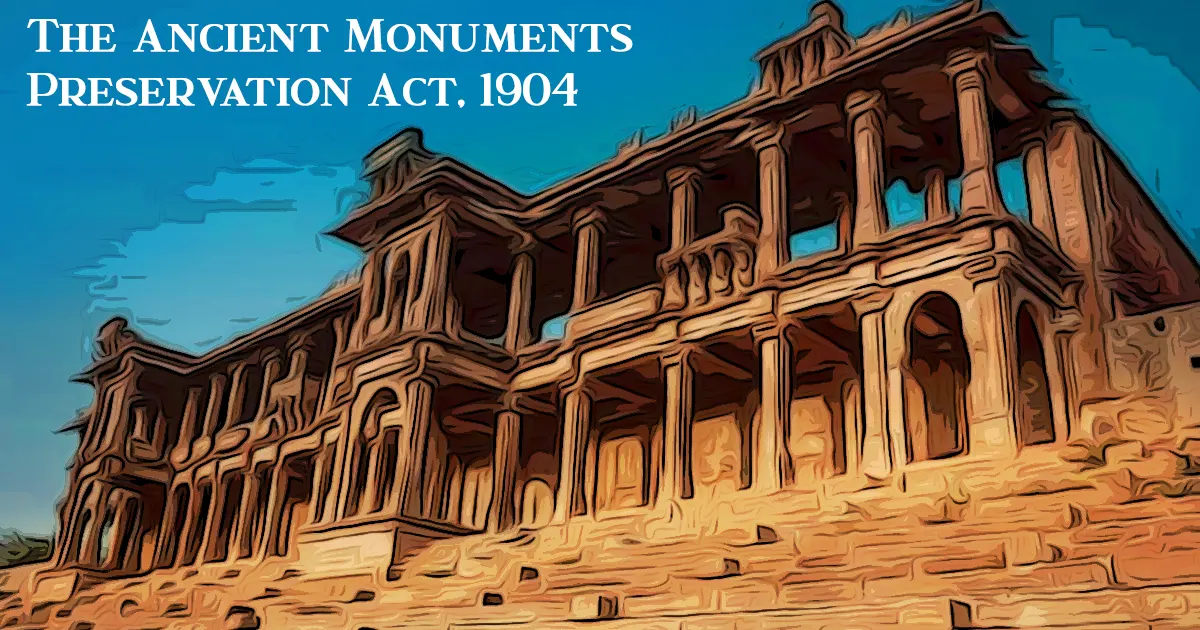
Context:
Recent tensions in Sambhal, Uttar Pradesh, regarding the Shahi Jama Masjid, have drawn attention to the interpretation of the Place of Worship Act, 1991 and its intersection with the Ancient Monuments Preservation Act, 1904. The Masjid is classified as a “protected monument” under this Act.
Overview of the Ancient Monuments Preservation Act, 1904
- Enactment and Historical Context:
- The Act was enacted in 1904 during the tenure of Lord Curzon, the Viceroy of British India.
- It was one of the first legislative measures aimed at the conservation of India’s rich cultural and historical heritage.
- Objective:
- The primary goal of the Act is to ensure the conservation and protection of ancient monuments, sculptures, carvings, and structures of historical, archaeological, or artistic significance.
- Declaration of Protected Monuments:
- The government is empowered to declare certain monuments as “protected monuments” to safeguard them from unauthorized alterations, excavations, or removal of artifacts.
- Protected status imposes restrictions on construction or excavation activities in the vicinity of these monuments.
- Maintenance and Preservation:
- The Act allows the government or authorized agencies to undertake maintenance, repair, and preservation of protected monuments.
- It includes provisions for regular inspections and necessary interventions to prevent deterioration.
- Acquisition of Land:
- The government is authorized to acquire private land containing protected monuments if it deems necessary for their preservation.
- This ensures that ownership issues do not hinder conservation efforts.
- Penalties for Violations:
- Any act of injury, defacement, or destruction of a protected monument is considered a criminal offence under the Act.
- Violators are subject to legal penalties, including fines and imprisonment, depending on the severity of the damage.
Significance of the Act
- Foundation for Modern Heritage Laws:
The 1904 Act laid the groundwork for subsequent legislation on heritage conservation, such as the Ancient Monuments and Archaeological Sites and Remains Act, 1958. - Protection of India’s Heritage:
It played a critical role in preserving India’s ancient monuments, many of which faced neglect, vandalism, or destruction during the colonial era. - Balancing Development and Conservation:
By regulating activities around protected sites, the Act sought to strike a balance between modern development and the need to preserve cultural heritage.




